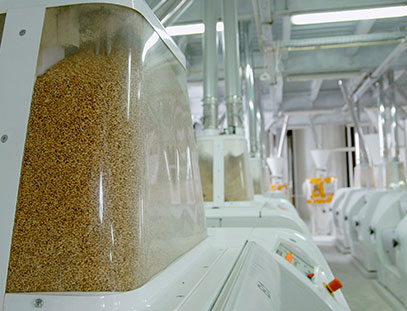Combustible dust is considered to be a solid material that is composed of distinct particles, regardless of their shape, size, or chemical composition. Combustible dust presents a flash fire or explosion hazard when suspended in air.
Regulations to Prevent Fire and Dust Explosion
There are a number of codes, standards, and best industry practices that govern combustible dust. One of these is the National Fire Prevention Association (NFPA) 61: Standard for the Prevention of Fires and Dust Explosions in Agricultural and Food Processing Facilities. Although these codes and standards are not law, they are highly regarded by all industry stakeholders including the insurance industry, and their recommendations are used and referenced extensively. Food processing facilities do need to comply with the requirements of this standard in order to perform food handling and processing operations safely.

Why It Affects You
The 2017 edition of NFPA 61 has undergone substantial revision to better align with the newly issued NFPA 652, Standard on the Fundamentals of Combustible Dust. NFPA 61 has been reorganized to match, where possible, the requirements of NFPA 652. As a result, new requirements for dust hazards analysis (DHA) have been added, as well as new chapters on performance-based design and hazard identification. Compliance with the requirements of NFPA 652 as well as NFPA 61, as an industry- or commodity- specific standard for agricultural and food processing facilities is demanded by the authority having jurisdiction (AHJ). What Kinds of Food Powders are Combustible? There is a wide range of agricultural and food products that can give rise to fire and explosion hazards. These include, but are not limited to:
- Flour
- Sugar
- Alfalfa
- Herbs
- Hops
- Pulp
Do I need a Dust Hazard Analysis?
If you handle, process, or manufacture combustible or explosible powders, then you need to have a dust hazard analysis (DHA) undertaken. The DHA must be completed within five (5) years from the effective date of this NFPA standard. As a note, some 24 percent of all combustible dust incidents are in the food processing industry.
Why Choose Stonehouse Process Safety for Combustible Dust Hazard Assessment (DHA)
Needs?
The clock is ticking for compliance with the requirements of NFPA 61 and 652. We are a team of like-minded process safety specialists with a passion for what we do – making the industry safer. We partner with our clients in the process industries to help them identify, assess, prevent, and control fire, explosion, and accidental loss of containment hazards in their operations. Our services include expert consulting, laboratory testing, and training in the specialist fields of dust explosion and fires; fire hazards, electrostatic hazards and processing problems, gas & vapor flammability hazards, Process Hazard Analysis, Process Safety Management, and incident investigation.
For more detailed information on this topic and how we can help you ensure the safety of your personnel, facility, and the community from dust fire and explosion hazards please contact us today.
